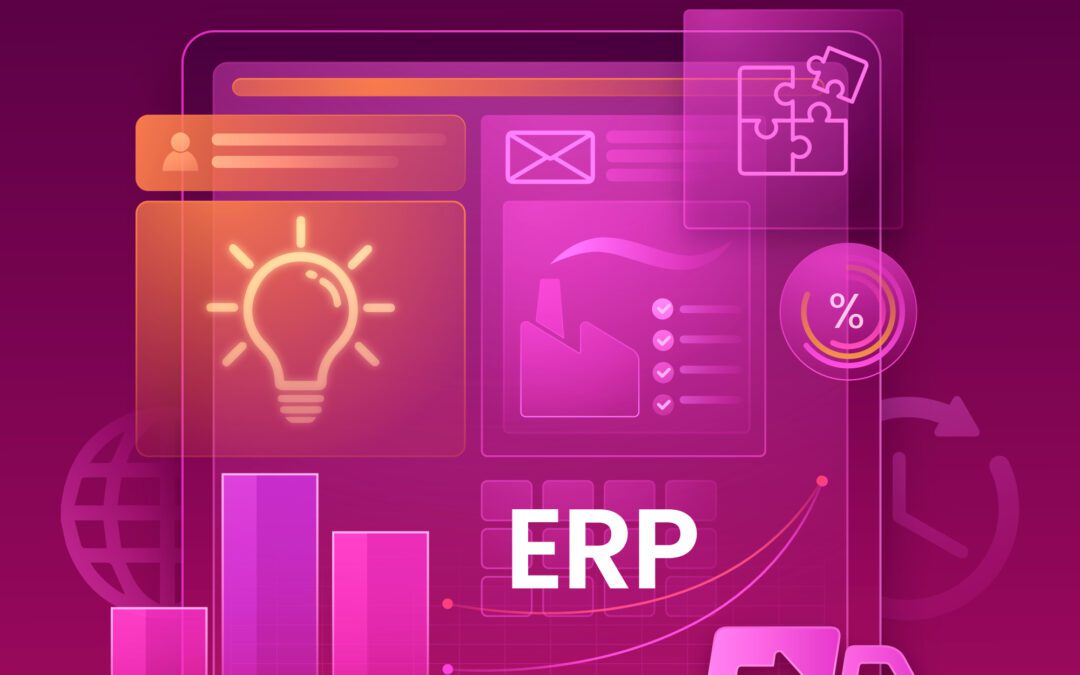Enterprise Resource Planning (ERP) systems have become integral to modern businesses, enabling them to streamline operations, enhance decision-making, and boost efficiency across various departments. But how exactly does an ERP system work? In this article, we’ll dive deep into the workings of ERP systems, exploring what they are, how they operate, and the numerous benefits they provide to organizations.
What is an ERP System?
An ERP system is a suite of integrated software applications that help manage and automate core business processes. These processes can range from finance, human resources (HR), supply chain management, customer relationship management (CRM), and manufacturing to project management and inventory tracking.
By centralizing data and processes in one unified system, ERP systems allow businesses to collect, store, manage, and interpret data from various departments, all from a single platform.
ERP System Components
A typical ERP system is made up of several components that address different business needs:
Finance and Accounting: Helps manage financial transactions, accounting, and budgeting.
Human Resources (HR): Manages employee data, payroll, recruitment, and performance tracking.
Inventory Management: Tracks the movement of goods and inventory levels, helping optimize supply chains.
Customer Relationship Management (CRM): Manages interactions with customers, tracking leads, and sales opportunities.
Supply Chain Management (SCM): Helps manage the flow of goods and services from suppliers to customers.
Manufacturing: Streamlines production planning, scheduling, and quality control.
Each of these components is interlinked to ensure smooth data flow and help businesses optimize their operations.
How Does an ERP System Work?
An ERP system operates by integrating multiple business functions into a centralized database, allowing for real-time information sharing across departments. The system collects data from various touchpoints, processes it, and makes it accessible to authorized users across the organization.
1. Centralized Database
At the heart of an ERP system lies a centralized database that stores all the information gathered by the various applications within the system. This database ensures that data is accurate, consistent, and up-to-date, and that different departments can access the same information without discrepancies.
For instance, when a sales team logs a new order into the ERP system, it updates inventory, finance, and manufacturing modules in real-time, ensuring everyone in the organization has the same view of the business status.
2. Real-Time Data Processing
One of the key features of ERP systems is their ability to process data in real-time. This means that when a transaction occurs—whether it’s a sale, a purchase, or an inventory update—it is immediately reflected across the system.
This real-time data processing ensures that businesses can make informed decisions promptly. For example, if there is a sudden surge in sales orders, the system can automatically adjust production schedules or trigger inventory restocking to meet demand.
3. Integrated Modules
As mentioned earlier, ERP systems consist of multiple modules, each dedicated to a specific function. These modules are designed to work seamlessly together, allowing data to flow smoothly across departments without the need for manual intervention.
For example, when a finance module processes an invoice, it triggers updates to the inventory module to reflect changes in stock levels. Similarly, when a manufacturing department completes a production run, the system updates both the finance and sales modules with the relevant data.
4. User Access and Permissions
While ERP systems allow for a centralized data repository, access to this data is usually controlled through user roles and permissions. This ensures that sensitive information is only accessible to authorized personnel.
For example, an HR manager may have access to employee records, but not to financial data. A warehouse manager may be able to track inventory levels but may not have permission to access customer data in the CRM system.
By assigning permissions based on roles within the organization, ERP systems help protect sensitive data and ensure that employees can only access the information they need to perform their jobs.
Key Benefits of ERP Systems
ERP systems offer numerous advantages that can significantly improve the efficiency and productivity of an organization.
1. Improved Efficiency
With an ERP system, businesses can automate routine tasks such as invoicing, payroll, inventory tracking, and order processing. This automation reduces manual work, minimizes errors, and speeds up business operations.
2. Data Accuracy and Consistency
As data is stored in a centralized system, it eliminates the need for multiple data entry points, which can lead to discrepancies. An ERP system ensures that everyone in the organization is working with the same up-to-date information, improving data accuracy and decision-making.
3. Better Decision-Making
ERP systems provide powerful reporting and analytics tools that help businesses make data-driven decisions. Managers can access real-time reports on sales, financial performance, inventory levels, and more, helping them identify trends and make informed decisions.
4. Scalability
As businesses grow, so do their operational needs. ERP systems are designed to be scalable, meaning they can easily accommodate additional modules, users, and functionalities as the business expands.
5. Improved Customer Service
With integrated customer data, ERP systems help businesses improve their customer service by providing faster response times, more accurate order tracking, and better insights into customer preferences and history.
6. Cost Savings
By streamlining operations and improving efficiency, ERP systems help businesses reduce operational costs. They can minimize waste, reduce inventory holding costs, and improve resource allocation, leading to significant cost savings over time.
Challenges of Implementing ERP Systems
While ERP systems offer significant benefits, implementing them can present several challenges.
1. High Initial Investment
ERP systems can be costly, especially for small and mid-sized businesses. The cost of software licenses, implementation, and training can add up quickly, making it a significant investment.
2. Complex Implementation
Implementing an ERP system can be a complex process, requiring significant planning, resources, and time. Customizing the system to fit an organization’s specific needs may involve challenges, especially for large businesses with multiple departments and functions.
3. User Resistance
Employees may be resistant to change, particularly if they are accustomed to legacy systems. Proper training and communication are essential to ensure that the transition to the new system is smooth and that employees are comfortable using the ERP software.
4. Data Migration
Migrating data from legacy systems to an ERP system can be a time-consuming and error-prone process. Ensuring that data is accurately transferred without disruption to business operations requires careful planning and execution.
Types of ERP Systems
There are different types of ERP systems available, and the right choice depends on the needs and size of the business.
1. On-Premises ERP
On-premises ERP systems are installed and hosted on a company’s own servers and hardware. These systems offer greater control over data and security but require significant upfront investment in infrastructure and IT resources.
2. Cloud ERP
Cloud ERP systems are hosted on the vendor’s servers and accessed via the internet. These systems offer greater flexibility, lower upfront costs, and easier updates, as the vendor handles maintenance and upgrades.
3. Hybrid ERP
A hybrid ERP system combines elements of both on-premises and cloud ERP. Businesses using a hybrid system can keep certain sensitive data on their own servers while taking advantage of the scalability and flexibility of cloud-based modules.
Key ERP Software Vendors
Some of the most popular ERP software vendors include:
SAP – Known for its robust and scalable ERP solutions, SAP is widely used by large enterprises across various industries.
Oracle – Oracle’s ERP solutions offer powerful analytics and integration features, making them ideal for businesses looking to scale.
Microsoft Dynamics 365 – A cloud-based ERP system that integrates with Microsoft Office products, making it a great choice for businesses already using Microsoft tools.
NetSuite – A cloud-based ERP solution offering comprehensive features for small and mid-sized businesses, with a focus on financial management and e-commerce.
Conclusion
In conclusion, an ERP system is a powerful tool that enables businesses to streamline their operations, improve efficiency, and make better data-driven decisions. By integrating various business functions into one cohesive platform, ERP systems help businesses save time, reduce costs, and improve customer service.
However, implementing an ERP system requires careful planning, training, and investment, as well as ongoing maintenance. For businesses that are prepared to take on these challenges, the benefits of an ERP system are immense.
Understanding how an ERP system works, and selecting the right one for your business, is crucial to unlocking its full potential and achieving long-term growth and success.






